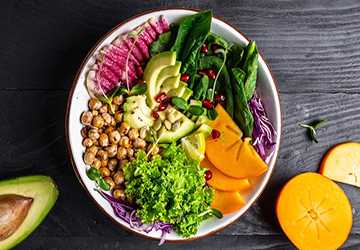Where to Find Vegan Protein Sources
As we shift toward plant-centred dietary preferences, more and more people are embracing vegetarianism, a spirituality that eschews all animal derivatives. A constant concern for these people is getting enough protein. This article aims to highlight the many vegan protein options, outline where to get your vegan protein, and highlight the top plant-based protein sources.

Vegan Protein Options: A Detailed Review
Various vegan protein options exist, from legumes and grains to nuts and seeds. These sources are detailed below:
Beans: the hero of protein
Beans have an exemplary protein content and are rich in fibre, iron, and magnesium. Legumes worth noting in your diet include:
●Pinto beans
●Chickpeas (chickpeas)
●Green lentils
●green peas
Grains: The Unsung Heroes of Protein
For example, quinoa is touted as a complete protein, containing all nine essential amino acids. Other grains high in protein include:
●Buckwheat
●Basmati rice
●Scottish oats
●Hulled barley
Nuts and Seeds: The Epitome of Nutrient Density
You can significantly increase your protein intake by supplementing your diet with various proteins. Examples of this include:
●Walnut
●Chia seeds
●Flaxseed (flaxseed)
●Pepitas (pumpkin seeds)
Soy products: the pinnacle of versatility and protein
These can be combined into various culinary creations, adding nutrients and variety to a vegan diet.
Purchasing Vegan Protein: Access and Consumption Strategies
Finding where to get vegan protein is crucial to maintaining a balanced diet. Plenty of vegan protein sources are available at grocery stores and health food stores. When dining out, prioritize places that offer vegan alternatives or ask for dishes to be modified to accommodate a vegan diet.
Incorporate vegan protein into your diet.
Incorporating plant-based protein sources into your diet can be exciting and innovative. This integrated strategy includes:
●We start the day with a protein-rich smoothie or porridge garnished with nuts and seeds.
●We incorporate protein into every meal, such as adding beans to salads or tofu to stir-fries.
●I choose nuts or homemade protein bars for snacks.
Increase nutrient density with strategic protein pairing.
Harmony Plant Protein
Combining different types of plant foods can improve the amino acid composition of your meals for a more complete protein supply. This protein complementation strategy involves pairing foods that, when eaten together, provide all the essential amino acids needed for optimal human health. Examples of pairings include:
●Pair cereals with beans.
●Spread seed butter on artisan whole wheat bread.
●Sprouted grain-wrapped bean paste

Culinary Innovations in Plant-Based Protein Preparations
The culinary world has gradually adapted to incorporating the plasticity of vegan protein varieties and transforming them into culinary masterpieces. Practices such as soaking, culturing and using culinary texture enhancers can increase the palatability and appeal of plant proteins. Gourmet workshops and digital platforms provide comprehensive knowledge on preparing refined vegetarian dishes focusing on protein-rich ingredients.
Optimizing Protein Synthesis: Nutritional Allies for Improved Absorption
Vitamins and minerals essential for protein metabolism
Selected micronutrients improve the system's efficiency in absorbing and metabolizing plant proteins. Including dietary ingredients rich in vitamins C, D, and iron can significantly boost protein synthesis. Nutritious foods include:
●Citrus fruits and peppers can supplement vitamin C
●Vitamin D-rich algae plant drinks and mushrooms
●Green leafy vegetables and ancient grains provide iron supplements
Cultured plant protein
The fermentation process enhances the flavour of plant foods and makes their nutrients more bioavailable and accessible to digest. Fermented plant foods such as tempeh, miso and tofu have proven to be effective sources of easily absorbed protein, adding a flourishing of symbiotic bacteria to the diet.
Environmentally conscious protein options and their global footprint
Choose proteins with less environmental impact.
Introducing plant-based proteins is a step toward a health-conscious lifestyle and environmental sustainability. These alternatives require only a fraction of the natural resources—water, solid soil, and energy—of animal alternatives. Highlighting the ecological benefits of a plant-based diet can spark a shift toward more environmentally friendly eating habits.
Grassroots Protein Sourcing
Supporting local farmers and food artisans by choosing locally harvested vegan proteins can reduce the environmental impact associated with food transportation. Local farming communities and markets are critical reservoirs of new, ecologically sustainable plant-based proteins.
Vegan protein avant-garde: cutting-edge developments and gastronomic diversity
Cutting-edge technology for protein harvesting
The novel approach opens the potential to isolate high-quality proteins from sources as diverse as aquatic plants, fungi, and atmospheric carbon reduction processes. These breakthroughs usher in a new era by expanding the range of available vegan protein options, making them more appealing and widely available.
Global restaurants rely on plant-based protein.
As the vegan trend gains traction across continents, a rich fusion of plant-based proteins with traditional and innovative cuisines is underway. This integration celebrates global culinary traditions and introduces new and exciting ways to enjoy vegan protein across diverse food traditions.
Improving nutritional synergy in a vegan diet
Discover the potential of phytonutrients with protein pairings.
Combining plant-based proteins with phytonutrient-rich foods promotes the absorption of essential macronutrients and antioxidants, promoting a harmonious interplay that enhances overall health. Illustrative examples include combining turmeric with lentils or kale with quinoa, where the vegetable's phytonutrient profile increases protein intake, and the protein-rich foods increase antioxidant intake.
Unrefined whole food protein source
●Amaranth and teff, these ancient grains are rich in protein.
●Spirulina and chlorella, nutrient-rich alga types
●Raw nuts and seeds that retain all their inherent oils and nutrients.
Conclusion
Introducing vegan protein options is good for your health and is ethically and environmentally responsible. Given the wide range of plant-based protein sources, getting an adequate supply of protein on a vegan diet is achievable and convenient. The mantra of a balanced diet is variety; therefore, exploring different food and vegan protein options will make your meals exciting and nutritious.







